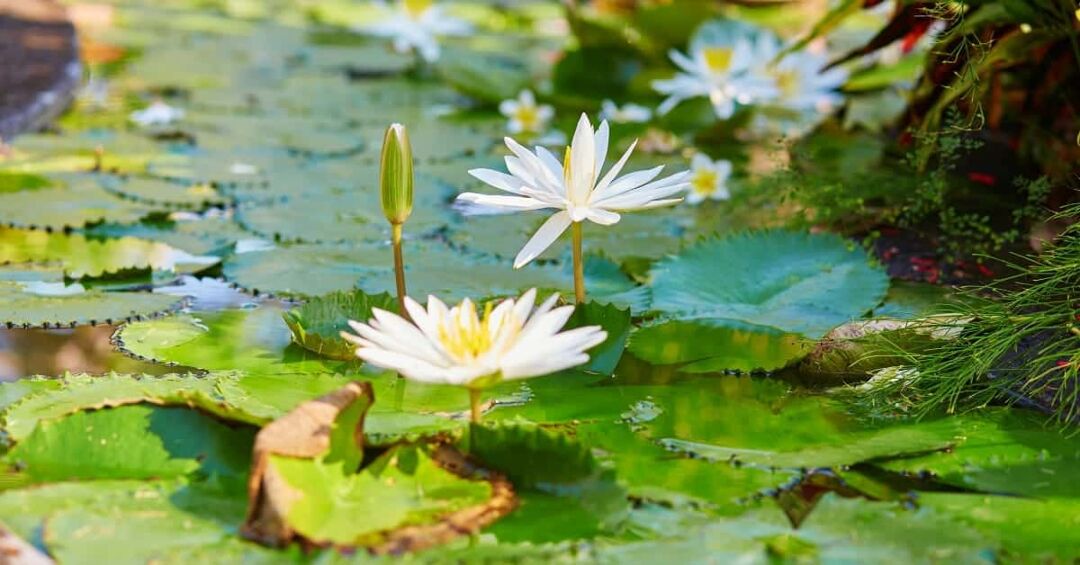Aquarium Plants Flowering
If you're an aquarium enthusiast, you know the appeal of a well-planted tank. The vibrant colors and textures of aquatic plants can transform your tank into a mesmerizing underwater world. But what about flowering aquarium plants? Not only do they add visual appeal, but they also play a crucial role in maintaining the aquatic ecosystem.
The Pain Points of Aquarium Plants Flowering
If you're new to the world of planted aquariums, you might be hesitant to add flowering plants to your tank. After all, they require extra care and attention, right? While it's true that some flowering plants may have specific needs, it's not necessarily complicated to care for them. However, improper care or conditions can lead to issues such as plant decay or algae overgrowth.
The Target of Aquarium Plants Flowering
Aquarium plants, including flowering varieties, play a critical role in maintaining the health of your tank. They absorb harmful chemicals and waste products, produce oxygen, and provide shelter for your aquatic pets. Additionally, the vibrant colors and textures of these plants can enhance the aesthetic appeal of your tank, creating a beautiful and relaxing environment for you and your fish.
Summary of Main Points
In summary, flowering aquarium plants are an excellent addition to any tank, as long as they are cared for properly. They provide numerous benefits, from improving water quality to enhancing the visual appeal of your tank. With a little extra care and attention, you can successfully incorporate flowering plants into your aquatic ecosystem.
Aquarium Plants Flowering - Target and Benefits
Flowering aquarium plants can add a new level of depth and beauty to your tank. Not only do they provide shelter and nutrition for your fish, but they also create a stunning visual display. From water lilies to Madagascar Lace, there are plenty of species to choose from that will thrive in an aquatic environment.
Personally, I have found that flowering aquarium plants have a calming effect on both me and my fish. Watching the vibrant colors and textures sway back and forth in the tank is almost meditative. Additionally, the plants provide a sense of natural beauty, not found in fake plants or plastic toys.
How to Care for Flowering Aquarium Plants?
Like any plant, flowering aquarium plants require care and attention to thrive. Some species may have specific needs, but in general, there are a few things you can do to ensure success. First, make sure your plants have adequate lighting. Different species may have different lighting requirements, so be sure to research your chosen plant's needs. Second, maintain proper water quality and chemistry. This includes regular water changes and monitoring levels of ammonia, nitrites, and nitrates. Finally, provide appropriate nutrition. You can use liquid fertilizers or tablets specifically designed for aquatic plants to ensure they receive the nutrients they need.
The Benefits of Flowering Aquarium Plants
Aside from their visual appeal, flowering aquarium plants play a critical role in keeping your tank healthy. They remove harmful chemicals and waste products, produce oxygen, and provide a natural habitat for your fish. Additionally, by creating a natural ecosystem, you can reduce the risk of algae overgrowth or other imbalances. With proper care and attention, flowering aquarium plants can provide numerous benefits to both you and your aquatic pets.
Question and Answer
1. Can flowering aquarium plants be grown in low light conditions?
Yes, some species of flowering aquarium plants can thrive in low light conditions. Some options may include Java Fern, Anubias and Cryptocoryne species.
2. How often should I fertilize my flowering aquarium plants?
It depends on the specific needs of your chosen plant species. However, in general, it's recommended to fertilize every two to three weeks. Be sure to follow the instructions provided on your chosen fertilizer.
3. What are some common issues that can occur with flowering aquarium plants?
Common issues with flowering aquarium plants may include plant decay, inadequate lighting, poor water quality, and improper nutrition. Be sure to monitor your plants closely and take appropriate action if issues arise.
4. Can flowering aquarium plants be kept with any type of aquatic pet?
While most flowering aquarium plants are safe for aquatic pets, some species may not be compatible with certain types of fish or invertebrates. Be sure to research the specific needs of your pets and chosen plant species before adding to your tank.
Conclusion
Flowering aquarium plants are a beautiful and beneficial addition to any tank. They can enhance the visual appeal of your aquarium while also playing a critical role in maintaining water quality and creating a natural ecosystem. With proper care and attention, you can successfully incorporate flowering plants into your aquatic world.
Gallery
10 Best Flowering Aquarium Plants For Your Attractive Tank

Photo Credit by: bing.com / flowering
10 Best Flowering Aquarium Plants For Your Attractive Tank

Photo Credit by: bing.com / plants attractive genus
10 Best Flowering Aquarium Plants For Your Attractive Tank

Photo Credit by: bing.com / aquarium madagascar genus
A Short Guide To Flowering Aquarium Plants | Planted Aquarium, Plants

Photo Credit by: bing.com /
10 Best Flowering Aquarium Plants For Your Attractive Tank

Photo Credit by: bing.com / genus
